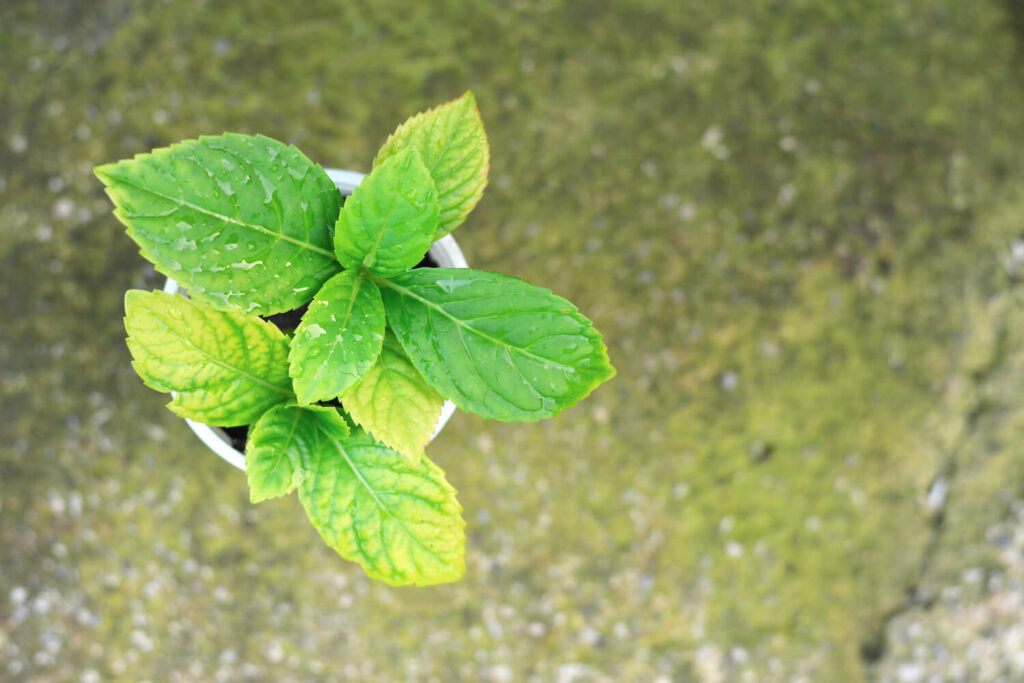Some Known Incorrect Statements About Hydrangea Leaves Turning Yellow
Some Known Incorrect Statements About Hydrangea Leaves Turning Yellow
Blog Article
The Facts About Hydrangea Leaves Turning Yellow Revealed
Table of ContentsUnknown Facts About Hydrangea Leaves Turning YellowThe smart Trick of Hydrangea Leaves Turning Yellow That Nobody is DiscussingThe Basic Principles Of Hydrangea Leaves Turning Yellow How Hydrangea Leaves Turning Yellow can Save You Time, Stress, and Money.The 6-Second Trick For Hydrangea Leaves Turning YellowSome Known Factual Statements About Hydrangea Leaves Turning Yellow
You can try to avoid fungal diseases by keeping your yards neat and free of debris. These leaves that will linger, waiting to assault in the following expanding period.Copper fungicides are, however if they are overused they can come to be poisonous to your plant. Clip the fallen leaves, and remove them from the garden.
If they aren't getting enough water, their leaves will certainly brownish. Hydrangeas have a in the noontime sun, and bouncing back once the sunlight has shifted and the plants have time to recoup. If this occurs continuously you may notice brownish and crispy fallen leaves that are sagging. This is their method of letting us recognize that it needs some additional dampness.

Hydrangea Leaves Turning Yellow Fundamentals Explained
If this is a recurring concern, you probably need to reconsider your watering schedule. Developed plants might need to be sprinkled one to 3 times weekly, depending on your problems. These shrubs will certainly do finest with one inch of water each week. It may appear tempting to spray the leaves down.
Water the base of the plant,. Once the plant has recoiled, you can resume a normal watering schedule. Most species and varieties prefer partial sunlight. Panicle hydrangeas like full sunlight, but the remainder of the group really likes partial color. Partial shade provides regarding four to six hours of sunlight.
The container needs to be huge enough so the plant can expand and obtain every one of the water and nutrients it needs. Location the container on a porch, or in a shady place on a patio area. You can also replace the plant with a panicle hydrangea. Panicles enjoy the full sun.
Regardless of the selection, strategy in advance and make certain your plant has plenty of security from the wind. You have a few alternatives here. You could hair transplant to a brand-new area, or you could develop a wind barrier using an additional plant, or fence. To produce a wind obstacle you could, or a hedge to obstruct the wind.
The 9-Minute Rule for Hydrangea Leaves Turning Yellow
Decorative grass, Rose of Sharon, or Holly shrubs are simply a couple of ideas of plants you could make use of to obstruct the wind. If you require to hair transplant, discover a spot in your yard that is well protected from sun and wind. Hair transplanting is finest performed in the fall or the springtime.
All of the above situations could take place to any type of gardener. Luckily for everyone, hydrangeas are very resistant, and will certainly probably recoup extremely promptly with a little love and treatment. The plants place is the most crucial factor when it involves getting established and appropriate growth. With a little planning on planting place and proper maintenance, you'll have the ability to guarantee your hydrangeas!.
So, if Hydrangea leaves turn yellow and diminishes later, it's generally because of overwatering, as the plant can not uptake water and loses the leaves to remove transpiration. Following this, Hydrangea leaves start to sag and shrivel. Because both problems can create yellow leaves, you need to find the distinction in between the overwatered and underwatered plant.
You can rescue the plant from yellow fallen leaves by supplying it the appropriate light and placement. If your plant obtains yellow leaves, relocate to a dark area. Area Hydrangea plants inside near an east-facing window. Dapple the plant with curtains or UV security sheets to obstruct straight warm.
The Hydrangea Leaves Turning Yellow Statements
, and temperature alterations can create yellowing fallen leaves and brown places. If it gets too cozy, the sides of the leaves come to be yellow, turn brown and develop a crunchy structure.
Hefty dirt can easily obstruct the oxygen supply to the origins and sever the link with the upper components of the plant (leaves). Hydrangea leaves change their he said shade if they discover minor aggravations in the soil make-up. This problem can create the Hydrangea entrusts to turn yellow, experience fallen leave drops, and make a droopy plant compatible overwatering.
Yellow fallen leaves in Hydrangeas are the first indications of condition infestation, frequently adhered to by black spots, browning, goes down, and wilting. Isolate the unhealthy or pest-infested plant from the healthy plants to stop disease spread. If it is a yard plant, get rid of all the infected leaves using decontaminated tools and clean up all the particles.
So, removing helps Hydrangea color unnecessary weight and protection, allowing the development of new leaves. The finest time to trim Hydrangeas is springtime when the plant is ready to sprout vegetation for the following period. Inspect for spent or unhealthy fallen leaves and reduce the base of a stalk that joins the leaves and stem.
About Hydrangea Leaves Turning Yellow
Prevent reducing healthy and balanced or environment-friendly leaves, and do not remove more than 25% of the plant's foliage. The main reason behind the red fallen leaves in Hydrangea is bad dirt or ecological conditions.
Repot the plant each year in spring or every 2 years if the development price is slow-moving (Hydrangea Leaves Turning Yellow).
There are six major reasons this may happen:: The plant does not get enough sunlight.: The origins are either also damp or too dry.: The plant is as well cold.: The dirt is not acidic or alkaline sufficient for the hydrangea.: The plant isn't obtaining the appropriate nutrients it needs to stay healthy and balanced.
Each factor impacts the plant in a way that can be dealt with if we recognize how to care for hydrangeas the appropriate means. When we speak about poor light for hydrangeas, we imply that the plant isn't getting enough sunshine.
How Hydrangea Leaves Turning Yellow can Save You Time, Stress, and Money.
Without enough sunlight, the leaves can transform yellow, the plant can come to be weak, and it could produce fewer blooms. To guarantee a hydrangea gets sufficient light, it needs to be placed in a spot where it can delight in the morning light and be safeguarded from the intense afternoon sun. Hydrangea Leaves Turning Yellow. Overwatering is when a hydrangea plant gets more water than it requires

This issue prevails in the loss as the weather condition changes or if a hydrangea is planted in a spot where it does not get adequate heat from the sunlight. It is necessary to recognize the right problems for hydrangeas to avoid low-temperature stress and anxiety. For example, official statement most hydrangeas expand finest in areas 6 to 9, where the climate is milder.

Report this page